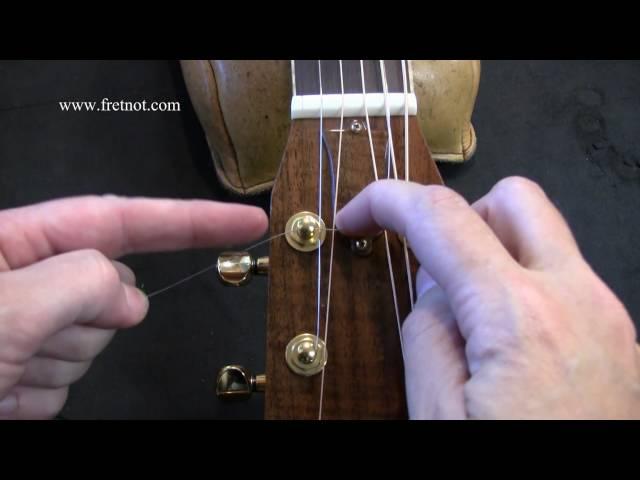Have you ever tried tuning your guitar only to end up sounding more like a cat stuck in a tree than a rock star? Fear not, fellow aspiring shredders, for we are here to help you navigate the treacherous waters of guitar tuning. In this guide, we will tackle the most common tuning issues and provide you with the tools you need to become a tuning master. So grab your tuner, a strong cup of coffee, and let’s tune our way to guitar greatness!
Contents
- 1 Understanding the Basics of Guitar Tuning
- 2 Identifying Common Tuning Challenges for Guitarists
- 3 Adopting Correct Techniques for Accurate Guitar Tuning
- 4 Navigating Alternate Tunings: Tips and Tricks
- 5 Dealing with Environmental Factors Affecting Guitar Tuning
- 6 Maintaining Your Guitar for Consistent Tuning Stability
- 7 Utilizing Advanced Tuning Equipment for Precision
- 8 FAQs
- 9 Keep on Rocking Out!
Understanding the Basics of Guitar Tuning
So, you’ve decided to pick up the guitar and become the next rockstar sensation. But before you start shredding those power chords, you need to get your instrument in tune. Here are some basics to help you understand the mystical art of guitar tuning:
First off, let’s talk about the strings on your guitar. From thickest to thinnest, they are typically tuned to E, A, D, G, B, and E. Remember this mnemonic: Elephants And Donkeys Grow Big Ears. Trust me, it will come in handy.
Now, how do you actually tune those strings? You can use a tuning fork, a piano, or even an app on your phone. But if you’re feeling old school (or just don’t trust technology), you can tune by ear. Just make sure your neighbor’s dog isn’t howling in pain while you do it.
Take it slow and steady, and don’t be afraid to ask for help. There are countless resources online to help you master the art of guitar tuning. So grab your axe, get those strings in line, and prepare to unleash some musical magic!

Identifying Common Tuning Challenges for Guitarists
If you’ve ever picked up a guitar, chances are you’ve encountered some tuning challenges along the way. Here are some common issues that guitarists face:
- String Slippage: That moment when you think you’ve finally nailed the perfect tuning only to have the strings start slipping out of tune faster than you can say “E-A-D-G-B-E”.
- Mysterious Buzzing Sound: It’s like having a tiny bee trapped inside your guitar, creating a buzzing noise that haunts your every chord.
- The Dreaded Flat Note: No matter how many times you twist that tuning peg, there’s always one stubborn string that refuses to cooperate and stay in tune.
- Intonation Woes: You tune each string individually, only to discover that your guitar sounds like a dying cat when you play a chord. It’s like the strings are conspiring against you.
But fear not, fellow guitarists! These challenges are all part of the journey to mastering the guitar. Remember to take breaks, breathe, and maybe have a little chat with your guitar to let it know who’s boss. Keep on strumming, and eventually, you’ll conquer those tuning woes like a rock star!

Adopting Correct Techniques for Accurate Guitar Tuning
Are you tired of your guitar always sounding out of tune? It’s time to ditch the guesswork and adopt some correct techniques for accurate guitar tuning.
First off, make sure you have a good quality tuner. Those old apps on your phone from 2008 just aren’t gonna cut it. Invest in a reliable tuner, whether it’s digital or a good old-fashioned clip-on. Trust me, your ears will thank you.
Next, when tuning your guitar, remember to go slowly and carefully. Rushing through the process will only lead to more frustration when you finally strum that first chord. Take your time and make sure each string is perfectly in tune before moving on to the next one.
And finally, don’t forget to stretch those strings. Yes, you heard me right. Just like a good warm-up before a workout, stretching your strings will help them settle into their proper pitch. Give each string a few gentle tugs after tuning to ensure they stay in tune longer. Your guitar will thank you with beautiful, harmonious sounds.

So you’ve ventured into the world of alternate tunings, huh? Well buckle up, because things are about to get wacky. But fear not, brave explorer, for I have some tips and tricks to help you navigate this uncharted territory like a pro.
First things first, remember to keep a tuner handy at all times. Alternate tunings can be a bit like a slippery eel – just when you think you’ve got it under control, it wriggles out of your grasp. So having a trusty tuner by your side will help you stay on track.
Another handy trick is to make note of the different intervals in each alternate tuning. Understanding the relationships between the strings will make it easier for you to navigate your way around the fretboard. Plus, it’ll impress your fellow musicians when you start spouting off about diminished fifths and augmented fourths like a pro.
And remember, don’t be afraid to experiment! Alternate tunings are like a playground for your creativity. So go ahead and try out different combinations until you find the one that speaks to your soul. Who knows, you might just stumble upon a magical sound that becomes your signature style.

Dealing with Environmental Factors Affecting Guitar Tuning
So, you’re having trouble keeping your guitar in tune huh? Well, let’s tackle those pesky environmental factors that are messing with your tuning vibes.
First things first, **humidity** can be a real pain in the neck when it comes to guitar tuning. High humidity can cause your strings to swell and contract, throwing your tuning out of whack. Invest in a good humidifier to keep your guitar happy and in tune.
Next up, **temperature** fluctuations can really mess with your tuning game. If you’re traveling to a different climate, make sure to give your guitar time to acclimate to the new surroundings. Think of it as a mini vacation for your six-stringed buddy.
Don’t forget about **storage**. Storing your guitar in a damp basement or a hot attic is a recipe for tuning disaster. Keep your guitar in a cool, dry place to ensure it stays in perfect pitch.
Maintaining Your Guitar for Consistent Tuning Stability
So, you’ve finally invested in that shiny new guitar you’ve been eyeing for months. Congratulations! Now comes the hard part - maintaining it for consistent tuning stability. Fear not, dear musician, for I am here to guide you through the perilous journey of guitar maintenance with a touch of humor.
First things first, let’s talk about the strings. Those little strands of metal are the key to making beautiful music, but they can also be the bane of your existence if not taken care of properly. Make sure to regularly clean them with a soft cloth to prevent buildup of dirt and grime. And hey, why not treat them to a nice little bath in some string cleaner every now and then?
Next up, let’s tackle the nut and the bridge. These little guys are responsible for keeping your strings in place and in tune. Give them a good scrub with a toothbrush to get rid of any dust or debris that might be causing your strings to slip and slide. A little dab of graphite can also work wonders in keeping everything running smoothly.
And finally, don’t forget about the tuning pegs! These sneaky little devils can sometimes be the culprits behind your guitar’s inconsistent tuning. Make sure to tighten any loose screws and give them a good ol’ twist every now and then to keep them in tip-top shape. Remember, a well-maintained guitar is a happy guitar. And a happy guitar means happy jam sessions ahead!
Utilizing Advanced Tuning Equipment for Precision
When it comes to tuning equipment, it’s all about precision. And what better way to achieve that precision than by utilizing advanced tools and gadgets that have been specifically designed for the job?
One such piece of equipment is the high-tech tuning fork, which can help you fine-tune your instrument to perfection with just a few flicks of the wrist. And let’s not forget about the ultra-sensitive digital tuner that can detect even the slightest variations in pitch. Talk about high-tech!
With these advanced tools at your disposal, you’ll be able to achieve a level of precision that would make even the most seasoned musicians green with envy. So why settle for mediocre results when you can take your tuning game to the next level with the latest and greatest in tuning equipment?
So go ahead, embrace the power of advanced tuning equipment and prepare to take your musical abilities to new heights. Your ears – and your audience – will thank you!
FAQs
Why does my guitar keep going out of tune?
Well, my friend, it’s probably because your guitar doesn’t like being stuck in one tuning for too long. It’s a free spirit that yearns to explore different pitches and frequencies. Or maybe you just need new strings. Who knows?
How can I prevent my guitar from going out of tune?
Ah, the age-old question. Make sure to stretch your strings properly when you first put them on. Treat your guitar with love and respect (no slamming it against the wall when you miss that tricky chord). And for the love of music, invest in a good quality tuner.
What should I do if my intonation is off?
If your intonation is off, it’s like your guitar saying, “Meh, close enough.” But close enough isn’t good enough in the world of music. Grab a screwdriver and adjust the saddles on your bridge until each fretted note is in tune. Your guitar will thank you.
How often should I tune my guitar?
As often as you need to. If you’re a perfectionist, you might find yourself tuning between every song. If you’re more laid-back, you might wait until your audience gives you the stink eye before reaching for that tuner. Just remember, a well-tuned guitar is a happy guitar.
What are some common mistakes to avoid when tuning a guitar?
Oh, where do I begin? Avoid tuning by ear if you have the musical sense of a rock. Don’t yank on those tuning pegs like you’re trying to start a chainsaw. And please, please, do not tune your guitar to match the sound of a cat in heat. Just use a tuner, okay
Keep on Rocking Out!
Now that you’ve learned how to conquer the most frustrating tuning troubles, you’ll be shredding like a pro in no time! Remember, practice makes perfect, so don’t be afraid to keep experimenting with different techniques until you find what works best for you. And always remember, no matter how many strings you break or how many times you accidentally tune to the wrong key, the most important thing is to have fun and enjoy making music. So keep on rocking out, and never stop chasing that perfect sound!



